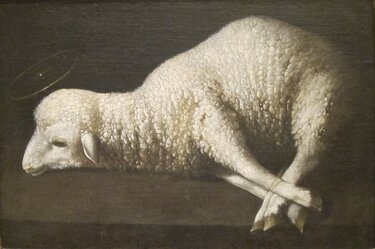 Thursday of the Third Week of Easter readings may be found here In the system of Temple sacrifices in Jesus’s day, there were offerings of grain, animals, and money. All these offerings were symbolic in that they represented the piety, atonement, or prayer of the person or persons making the sacrifice. The most important sacrifice of the year was that of the lambs for the feat of Passover. That sacrifice differed in that the lambs were sacrificed in the Temple, but they were not burned on the altar. They were distributed to the people to consume in their Passover observances. The Gospel of John draws a parallel between Jesus, the “Lamb of God,” and this sacrifice and observance of Passover. Jesus does not offer a symbolic, external, offering. Rather He offers His own Body and Blood. He is the offering. And this Lamb is given to the faithful so that they may participate in His offering and receive His life within them. And so Jesus can say as He does today in this passage: “I am the living bread…” and “I will give my flesh for the life of the world.” We also hear today of Philip’s baptism of the Ethiopian eunuch. Here we have another allusion to Jesus as the Lamb, but here in the context of the call to baptism. We witness again the rapid and almost miraculous spread of the faith in Jerusalem and beyond even as the authorities try to suppress it. I wonder if these readings might inspire us to reflect upon the nature of our own baptism. To be baptized into Christ Jesus is more than “joining” a group or accepting a set of beliefs and practices. It is the entrusting of our whole selves, all that we are and will become, to the Lord. St. Ignatius of Antioch, on his way to be martyred offered powerful testimony to this truth and its link to our participation in the Eucharist: “I am the wheat of God and am ground by the teeth of the wild beasts, that I may be found the pure bread of Christ.” Like that great Saint and every disciple baptized into Christ, you and I are called to be a living offering.”
0 Comments
Leave a Reply. |
AuthorWrite something about yourself. No need to be fancy, just an overview. Archives
June 2020
Categories |
 RSS Feed
RSS Feed
